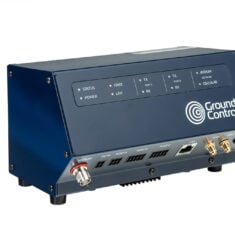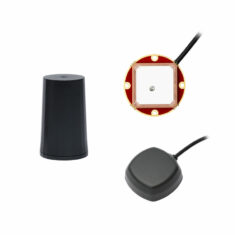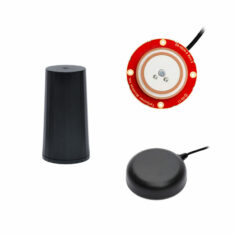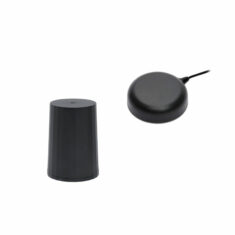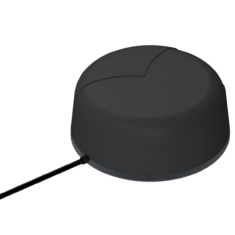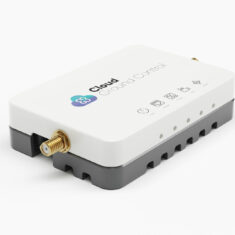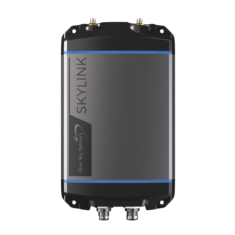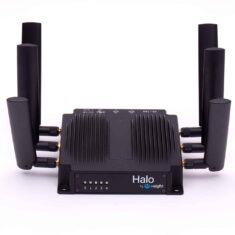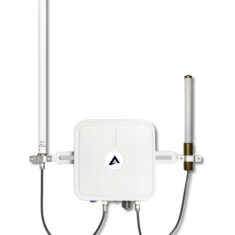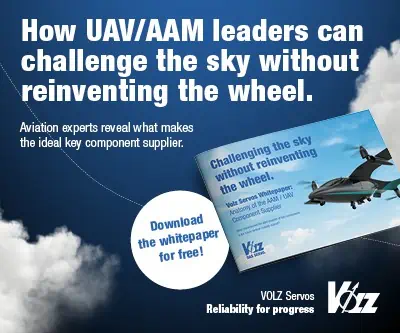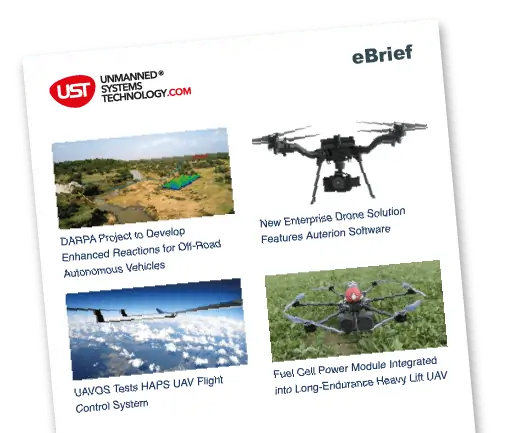Wireless Connectivity for Drones & Unmanned Systems
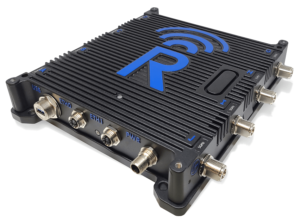
Rajant’s BreadCrumb® Wireless Network Nodes
Wireless connectivity allows drones and UAVs (unmanned aerial vehicles), as well as other platforms such as UGVs (unmanned ground vehicles) and USVs (uncrewed surface vessels), to communicate with a GCS (ground control station) or other center of operations. This wireless communication is essential for receiving command and control (C2) data, as well as transmitting telemetry information and payload data such as images and streaming video. Drones and unmanned systems may use a variety of methods to form wireless datalinks.
Satellite Connectivity
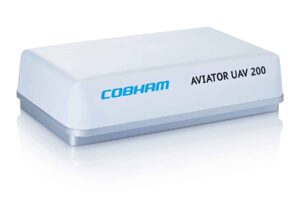
Cobham Aerospace’s AVIATOR UAV 200 SATCOM
SATCOM (satellite communications) can provide highly reliable wireless connectivity for unmanned vehicles operating almost anywhere on the planet, which also makes them highly suited for BVLOS drones. SATCOM terminals are relatively bulky compared to RF and cellular modems, possibly making them unsuitable for smaller SWaP (size, weight and power)-limited drones. Taking advantage of SATCOM usually requires subscription to a service, adding additional costs.
Wi-Fi Connectivity
Wi-Fi is a common method of communications used in smaller and hobby drones. While good data rates can be achieved, range is typically limited to under a kilometer. Wi-Fi also uses the unlicensed ISM (industrial, scientific and medical) band, which is shared by many devices, so interference may be an issue.
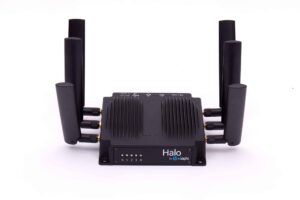
Elsight’s Halo UAV Communication System
RF Connectivity
RF (radio frequency) connectivity can extend the range of drone datalinks up to tens of kilometers, depending on the size of the antenna and the power of the transmitter. RF datalinks may operate on a number of different frequencies, with lower frequencies offering the greatest range but lowest data rate.
LTE Connectivity
Cellular and LTE communications can provide good bandwidth for data-intensive applications such as streaming video, and theoretically allows drone pilots to control their aircraft from anywhere in the world as long as there is a connection, making it ideal for BVLOS (beyond visual line of sight) operations. Coverage may be an issue – in many parts of the world, 4G and 5G are not yet ubiquitous, especially outside of urban areas.













